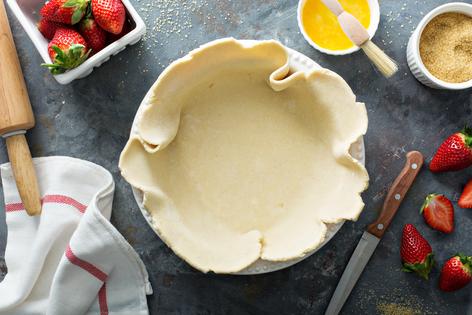Eating Well: 6 tips for perfect summer pies
Published in Health & Fitness
What’s better than a perfectly tart slice of fruit pie on a warm summer evening? Maybe a scoop of ice cream with it! Fresh fruit pies are a delicious way to make use of the season’s strawberries, raspberries, peaches, plums, blueberries or nectarines, but the crust needs to shine just as much as that amazing summer fruit.
Here, EatingWell magazine’s expert Test Kitchen staff members share six essential tips for making perfect, healthier pie crust. Pie-crust novices and seasoned pros alike can use these tricks to ensure a crust that’s flaky and delicious — ice cream optional.
1. Use the right flour.
At EatingWell, we recommend using a mix of whole-wheat pastry flour and all-purpose flour in our crust, even if you’re using a recipe that calls for all-purpose flour. Why? The pastry flour has less gluten-forming potential, keeping baked goods tender. Also, you get a boost of fiber from the whole wheat (12 more grams per cup) and more essential B vitamins, zinc and magnesium. Some people like the nutty flavor of whole-wheat flour. Others don’t. So we use a mix of all-purpose and whole-wheat pastry flour to tone down the wholesomeness of the whole-wheat.
2. Be sure to measure the flour accurately.
Keep in mind that for any baking, it’s important to measure your flour properly. Don’t just scoop into the flour with the measuring cup. That technique adds a lot of extra flour to the measure and can result in dry baked goods. EatingWell’s technique for properly measuring flour is to spoon the flour into your measuring cup, then scrape across the top with a knife to level it off.
3. Swap in healthier fats.
I love the taste of butter and know it can’t always be replaced, especially in baked goods, but to keep saturated fat in check, use canola oil instead of butter as much as possible. Tablespoon for tablespoon, butter has seven times more saturated fat than oil. Experiment with your favorite recipe by replacing half of the butter with a heart-healthy oil like canola or walnut oil.
4. Make sure your water is ice-cold.
The colder the water, the less likely the butter is to melt while you knead your dough. And, believe me, you don’t want your butter to melt. By keeping it solid until the pie is baking in the oven, you will create a much flakier pie crust.
5. Don’t overwork the pie dough.
Some people see the small bits of butter in the dough and try to knead it until they have disappeared. Overkneading hurts the flakiness factor, and forms gluten, making the dough tough. Instead, cut your butter into small pieces and quickly rub them into the dry ingredients until the pieces are smaller but still visible. It should only take a few quick kneads to bring the dough together. And it’s less work on your part.
6. Refrigerate the pie crust before rolling it out.
Pie dough likes to be cold from the beginning. By chilling your pie dough for an hour or more before rolling it out, you are more likely to keep the butter solid, so that it melts more slowly as your pie bakes. This, in turn, will make for a flakier pie crust. And that will make for a pie to remember.
(EatingWell is a magazine and website devoted to healthy eating as a way of life. Online at www.eatingwell.com.)







Comments